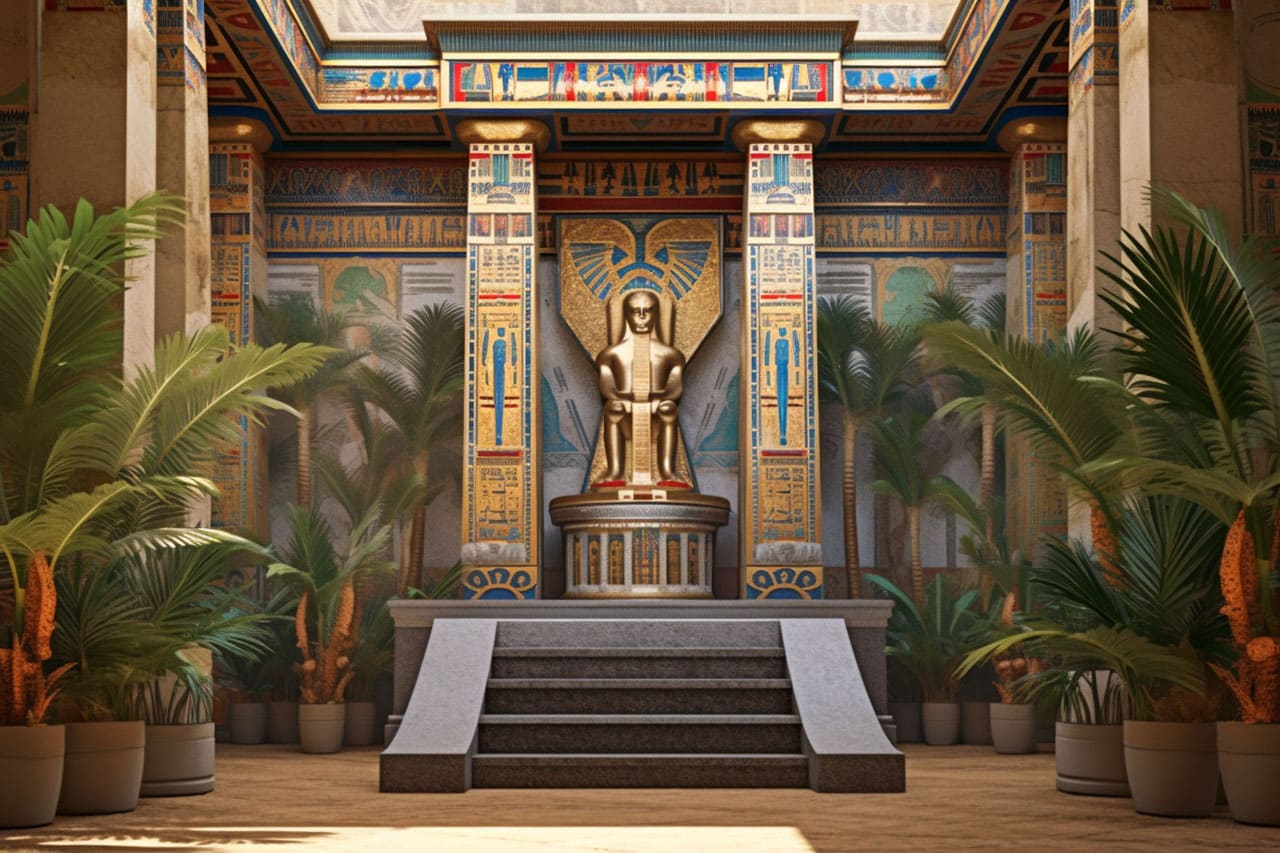Marianne had always been fascinated by Egypt. From a young age, she had devoured books about the ancient pharaohs and their tombs, dreaming of one day exploring the ruins herself. So when she was offered a job as an archaeologist on an expedition to the Valley of the Queens, she jumped at the chance.
It was a grueling journey to the site, through sweltering deserts and treacherous mountains. But as they approached the valley, Marianne’s excitement grew. This was where the great queens of ancient Egypt had been laid to rest, and she was about to explore their tombs.
The team set up camp at the edge of the valley, and Marianne spent the first few days getting to know her fellow archaeologists and the local workers who would help them excavate. She was the only woman on the team, and some of the men were dismissive of her at first. But she proved herself quickly, working tirelessly alongside them in the blistering heat.
Finally, the day came to start exploring the tombs. The team had been granted permission to excavate a previously undiscovered tomb, believed to belong to Nefertari, the beloved wife of Pharaoh Ramesses II.
Marianne could hardly contain her excitement as they approached the tomb entrance. She could feel her heart pounding in her chest as they removed the seal and entered the dark, musty chamber.
It was unlike anything she had ever seen before. The walls were covered in vivid paintings and hieroglyphs, depicting scenes from Nefertari’s life and journey to the afterlife. Marianne felt a shiver run down her spine as she gazed up at the ceiling, where the goddess Nut was depicted swallowing the sun each night, only to give birth to it again the next morning.
For weeks, the team worked tirelessly to excavate the tomb and document its contents. They found incredible treasures, including jewelry, furniture, and even a golden coffin.
But as they delved deeper into the tomb, Marianne began to sense that something was not quite right. There were strange symbols etched into the walls that no one could translate, and the air inside the tomb seemed to grow heavier with each passing day.
One night, Marianne had a vivid dream. She was standing in front of the tomb, and the walls were alive with flickering shadows. Suddenly, she heard a voice calling out to her from deep within the tomb.
“Marianne,” the voice whispered. “You must leave this place. It is not safe here.”
Marianne woke up with a start, covered in sweat. She couldn’t shake the feeling that the dream was somehow important, that it was trying to tell her something.
As the weeks passed, strange things began to happen in the camp. Tools would go missing, and the workers whispered about ghosts and curses. Marianne tried to dismiss their fears as superstition, but even she couldn’t deny the sense of unease that permeated the camp.
Finally, they reached the innermost chamber of the tomb. It was here that they found the most remarkable treasure of all: the mummified body of Nefertari herself.
But as they approached the sarcophagus, Marianne noticed something strange. The body inside was not in the usual position, with the arms crossed over the chest. Instead, the arms were stretched out as if in supplication, and the expression on the mummy’s face was twisted in a grotesque rictus.
Suddenly, Marianne realized that the tomb was not cursed by some supernatural force. It was cursed by something much more insidious: greed. The team had been so focused on finding treasure that they had lost sight of the fact that they were disturbing the final resting place of a queen and desecrating her memory.
Marianne knew what she had to do. She convinced the team to stop their excavation and reseal the tomb, leaving Nefertari to rest in peace. It was a difficult decision, but Marianne knew that it was the right thing to do.
As they left the Valley of the Queens, Marianne couldn’t help but feel a sense of loss. She had been so close to uncovering the secrets of one of the most remarkable queens in Egyptian history, and yet she had walked away. But she also knew that she had learned a valuable lesson about the importance of respecting the dead and their final resting places.
Years later, Marianne would return to Egypt to continue her work as an archaeologist. But she would never forget the lessons she learned in the Valley of the Queens, and the sense of wonder and respect that had driven her to explore the ancient tombs in the first place.
